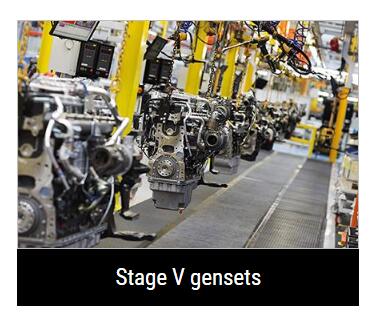Welcome to Sino Bearings web
24x7 HOTLINE:+86-28-81454188

 NEWS
NEWS
Keith Brown offers OEMs guidance on producing Stage V equipment
Think back a few years. Installing a diesel engine used to be a dream; find somewhere with sufficient ventilation, plumb the exhaust, connect the fuel lines, connect the equipment you need to power and voila! The introduction of new emissions legislations has made it much more challenging, albeit for a very good cause. There are several challenges to overcome when producing Stage V equipment, and a number of best practice methods.
The delay of the introduction of Stage V emissions legislation due to disruption caused by the pandemic was a relief to many. Although OEMs are well underway in designing and manufacturing compliant equipment, the extension to June 30, 2021 to incorporate all pre-stage V engines and December 31, 2021, to place them on the market, provides welcome breathing space.
For the genset manufacturers to which previous legislation did not apply, it provides additional time to catch up with other industries. So, although the industrial sector has many engine solutions, the power generation industry has previously been lagging behind.
However, it can be a big task for an OEM to transition all its 19 to 560kW equipment to Stage V compliance. The major change is the requirement to add aftertreatment technology to reduce the amount of particulate matter released, which requires additional hardware with further requirements for plumbing and maintenance.
Though there is a grace period, businesses hoping to sell to customers that supply to sites near Greenfield land or in London may benefit from preparing their Stage V equipment earlier, as these sites may require emissions information and for assets to be registered.
Stage V compliance may require equipment redesign
Though some engine manufacturers, including Perkins, have designed complete power packages, equipment still commonly requires redesign for Stage V compliance. In many cases, the addition of aftertreatment technology, such as diesel particulate filters (DPF), means OEMs have to redesign their engine compartment to accommodate the additional hardware. A DPF is commonly bolted onto the top of the engine and increases the height of the engine, for example, requiring redesign of the engine housing or enclosure.
To overcome this challenge, OEMs may consider mounting the aftertreatment equipment remotely, but this creates additional complications in where to mount it, how to do it, and importantly, additional testing. Most OEMs opt not to do this, for these reasons.
Another difficulty is that not all engines in current production will evolve into Stage V products. In this case, OEMs may need to source an alternative engine, taking them back to square one.
Start early with CAD modelling
The best approach is to obtain a model of the Stage V engine and aftertreatment device from your engine supplier as early as possible. You can use the CAD model to identify if you have space and establish if there are any clashes, to determine if you will need to make any changes to your machine design. This will involve assessing every interface that your equipment will connect to the engine including electricals, controls, exhaust, air inlet, fuel and more.
There are several new design considerations as a result of Stage V. For example, engines with selective catalytic reduction (SCR) technology may require changes to the engine control module (ECM). The ECM controls the Adblue pump, so when the engine is turned off, the Adblue pump can draw the fluid out and back into the tank. Therefore, electrical power to the engine cannot be cut until the process is complete or it can lead to crystallisation, freezing or leaking in the pipes. You may therefore need a permanent battery connection to the ECM to overcome this.
At Stage V your engine will have NOx sensors that measure the difference in NOx between the engine and the aftertreatment to help control NOx emissions. Some engines have a tailored pipe that makes it easy to add a sensor, which makes the process easier, but the OEM would still need to find an off-engine location for the electronic NOx controller.
A close relationship with your engine supplier will help you to understand the design limitations so you can work around them. The supplier should also be able to provide guidance on best practice, what is and isn’t allowed and if any planned changes will impact emissions. With this input, you can establish a plan for your product.
Configuring, set up and testing Stage V engines
Stage V introduces additional tests to perform on the engine, alongside additional parameters to configure in the ECM. One benefit is that OEMs now have different ways to control the engine speed; conventional throttle, power take-off (PTO) speed, and various other ways of setting the speed, so users can switch between power curves, something useful in mobile equipment.
The engine supplier can test the fuel system, exhaust and engine filtration systems are all working correctly and that they meet the requirements of the engine. For example, if the fuel temperature or return pressure is too high, this could be a result of using the wrong size or length of hose or too small a fuel tank. If they identify a problem, they can help you to rectify it, to provide reassurance that your design will be able to run in the field without issues. Ultimately, it is important that OEMs have confidence in their products and their suitability for the application.